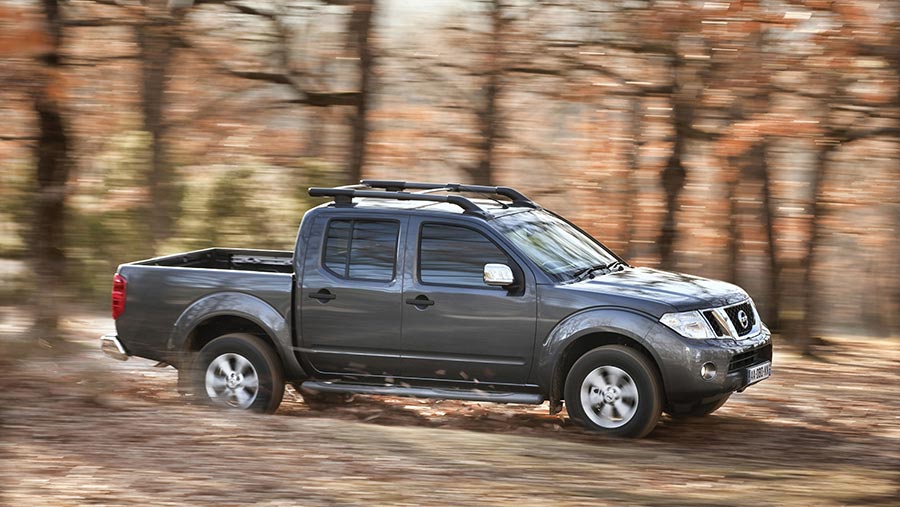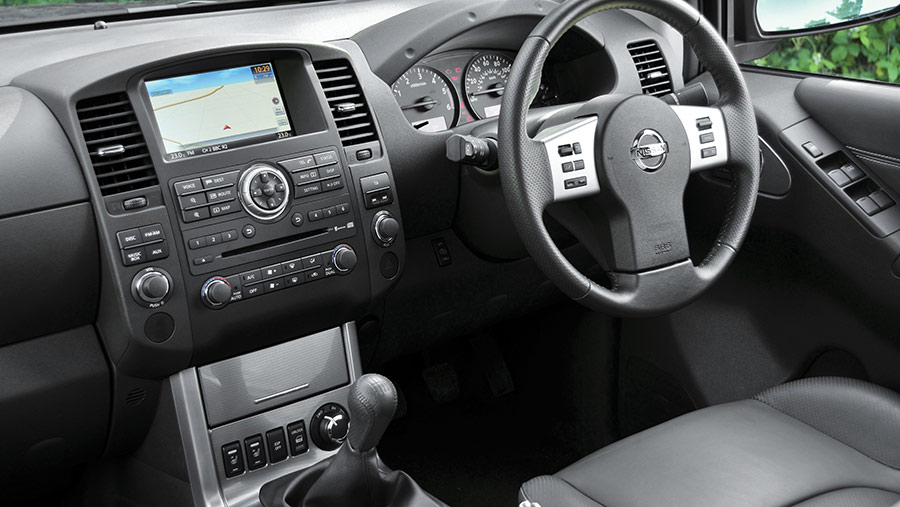Tips for buying a second-hand pickup: Nissan Navara
 © Nissan
© Nissan Nissan Navara D40 (2005 to 2014)
Nissan’s D40 Navara was built from 2005 to 2014 and superseded the D22, which had been around since the late 90s.
At its UK launch, there was just one engine on offer – a four-cylinder 2.5-litre turbodiesel that developed up to 187hp and 450Nm. However, in 2010, the firm added a Renault-sourced 3-litre V6 diesel that really spiced things up with a massive 231hp and 550Nm of torque.
Payload was well up there at 1,250kg, but the towing capacity was just 2.6t. An increase to 3t on the V6 models put them a little closer to the Ford Ranger and Isuzu D-Max.
In the early days, Nissan offered the Navara in S, SE and Outlaw trim, changing this to Visia, Tekna and Acenta in 2010. All models were available with a six-speed manual transmission and plusher versions had the option of a five-speed auto. V6 models came with a seven-speed auto.
There was much to like about these trucks, with plenty of power, nicely specced interiors and a decent balance between road manners and mud-plugging ability.
But the D40’s good points have been significantly overshadowed by some alarming chassis failures and problems with the 2.5-litre engine and driveline. We didn’t have space to include all the main problems below.
All this means that second-hand D40 buyers should do plenty of homework before taking the plunge. That said, those that know what they’re doing can end up with a lot of truck for their money.

© Nissan
Early models with fewer than 100,000 miles on the clock can be found for less than £5,000 and some of the very last low-mileage examples have asking prices of up to £18,000. For £12,000, buyers should be able to find a tidy looking high-spec 2.5-litre or 3-litre V6.
The D40 was replaced by the NP300, which brought in a 2.3-litre engine and 3.5t towing capacity.
See also: Pickup test: Nissan Navara Tekna
What to look out for
Chassis corrosion
The Navara D40 has been plagued by chassis corrosion and Nissan has acknowledged that this was a problem.
Some owners have received pay-outs from the firm, a number of vehicles have had their chassis repaired, while others have kept going without any significant problems.
For anyone considering buying a D40 Navara, it’s a sensible move to have the chassis professionally inspected.
For those who find themselves needing to have a chassis repaired, a couple of options are on the table. A number of firms will be able to patch up the damage and fit reinforcing brackets to help prevent future problems.
Yorkshire firm Thornton Breakers also offers a service to fit a fully reconditioned and strengthened galvanised chassis for £3,000 including an MoT.
Cam chain
The 2.5-litre dCi engine is fitted with a single cam chain and it’s a serious weak point. Any signs of rattling under the bonnet should be cause for alarm and the problem should be investigated. If the chain snaps, the engine will probably need to be rebuilt, or replaced.
To prevent the chain going in the future, it might be worth upgrading to a duplex cam chain arrangement, as offered by Shropshire firm Billcar.
Half shafts
Navaras have a reputation for chewing through driveshafts. Genuine replacements cost more than £200, but there are cheaper alternative options.
EGR valve
EGR valves are known for blocking up, and when they do, they generally cause the engine warning light to come on. Replacements cost about £150.
Head gasket
If the heater stops working, it’s a sign that the head gasket has failed. Costs to have this repaired can run to about £1,000.
Specifications
Engine: 2.5-litre, four-cylinder dCi
Power: 144hp to 190hp
Torque: 403Nm to 450Nm
Engine: 3-litre V6 diesel
Power: 231hp
Torque: 550Nm
Transmission options: Six-speed manual or five-speed auto (seven-speed on V6)
Towing capacity: 2.6t (3t on V6)
Payload: 1,250kg
*Expect some variation in specification throughout the build run

